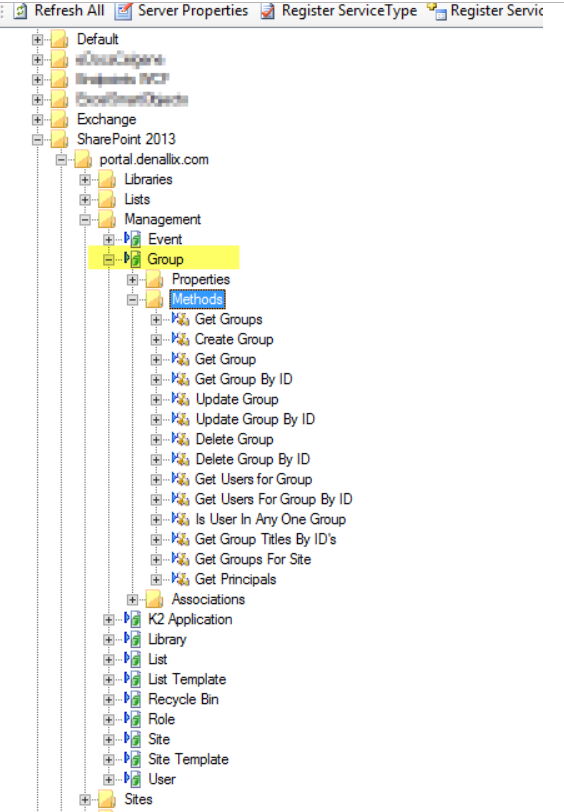Hi Mates,
I would like to use K2 Five smartobject to retrieve two or more SharePoint 2016 Group users.
But current WebAPI function only allow to retrieve one Sharepoint Group.
Thanks in advance.
Hi Mates,
I would like to use K2 Five smartobject to retrieve two or more SharePoint 2016 Group users.
But current WebAPI function only allow to retrieve one Sharepoint Group.
Thanks in advance.
Hi benson;
If you are integrating with SharePoint 2013/2016, you should use the Management > Groups SmartObject:

I hope you find this post helpful in resolving part of your issue if not all. Should it be helpful in any way, please mark it as such by "Mark As Solution" or "Kudo" as it will be of help to other members of the community who encounter a similar issue.
Regards,
Widson.
Dear Widson
Thank you for your reply, which method will be used for this function?
Thanks & regards,
Benson
Hi Benson;
Thank you, for the feedback.
Get Groups method, should return group availlable, Get Group by ID, should be able to return the desired group.
also play around with other methods on your application.
Kindly remember the following:-
I hope you find this post helpful in resolving part of your issue if not all. Should it be helpful in any way, please mark it as such by "Mark As Solution" or "Kudo" as it will be of help to other members of the community who encounter a similar issue.
Regards,
Widson.
Enter your E-mail address. We'll send you an e-mail with instructions to reset your password.